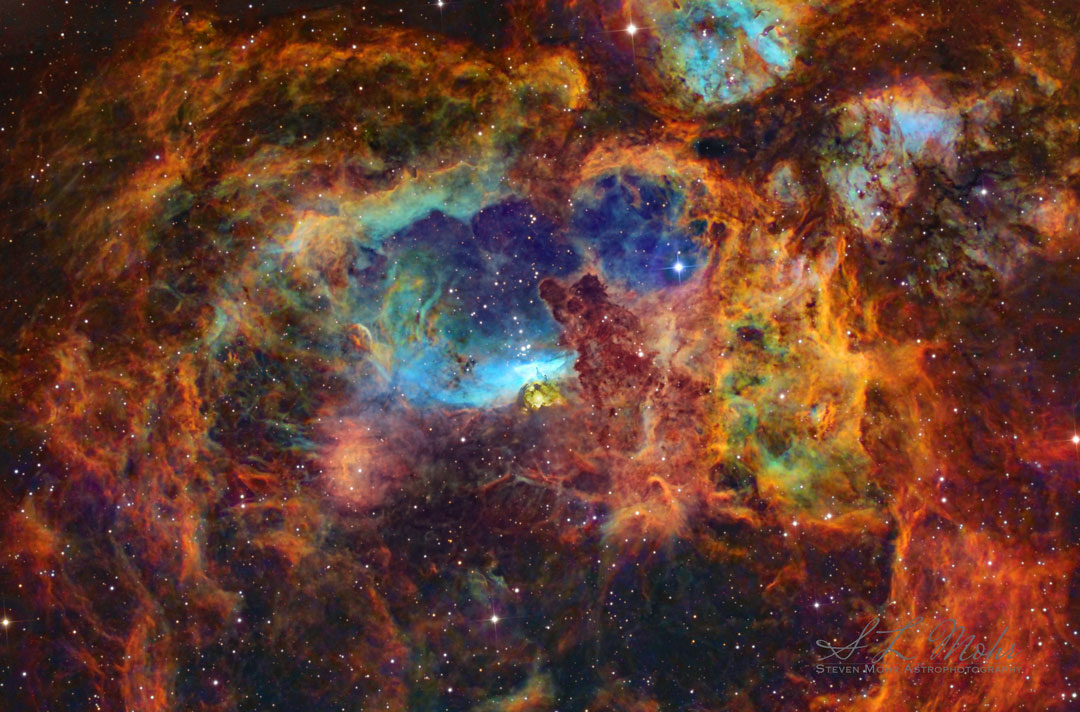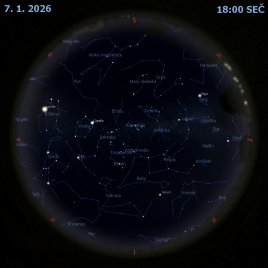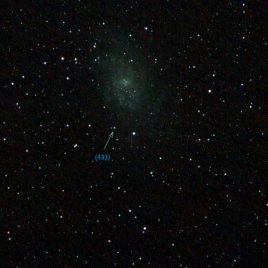NGC 6357: Humří mlhovina

Uznání a copyright: Steven Mohr
Proč v Humří mlhovině vznikají jedny z nejhmotnějších známých hvězd? Nikdo pořádně neví. Humří mlhovina je katalogizovaná jako NGC 6357 a poblíž středu hostí otevřenou hvězdokupu Pismis 24, která obsahuje neobvykle jasné a hmotné hvězdy. Celková modrá záře ve vnitřní hvězdotvorné oblasti pochází z emise ionizovaného vodíku. Okolní mlhovina, která je zde vidět, obsahuje složité tkanivo plynu, tmavého prachu, stále vznikajících hvězd a hvězd nově zrozených. Složité vzory způsobuje komplexní interakce mezi mezihvězdným větrem, tlakem záření, magnetickým polem a gravitací. NGC 6357 měří asi 400 světelných let a nachází se asi 8000 světelných let v souhvězdí Štíra (Scorpion).
Seznam odkazů v popisu
- Harvard.edu: Young open clusters in the Galactic star forming region NGC 6357
- APOD: 2016-03-27 NGC 6357: Katedrála hmotných hvězd
- APOD: 2018-06-12 Star Size Comparison 2
- Bf-Astro.com: Hubble Palette Color Map Images w/ PhotoShop
- APOD: Emission Nebulae
- GSU.edu: Ionization Energies
- Wikipedia: Hydrogen
- Flickr.com: Steven Mohr: NGC6357 | Lobster Nebula | SHO+RGB Stars
- APOD: 2017-10-08 Temné molekulární mračno Barnard 68
- NASA: Stars
- NASA: Podcast: Dust in the Interstellar wind
- Wikipedia: Radiation_pressure
- NASA: Magnetic Fields - History
- NASA: What Is Gravity?
- Harvard.edu: Chandra: Note on Cosmic Distances
- Harvard.edu: Chandra: Scorpius (The Scorpion)
NASA Official: Phillip Newman Specific rights apply. NASA Web Privacy Policy and Important Notices
A service of: ASD at NASA / GSFC & Michigan Tech. U.
Odkaz na originální APOD


